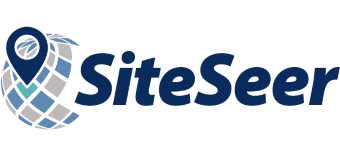 Successful retail chains know that choosing sites is a complex and data-driven process. As technology has improved and the availability of data has expanded significantly in recent years, businesses now understand that site selection should be done methodically, using the best, most relevant data available to them.
Successful retail chains know that choosing sites is a complex and data-driven process. As technology has improved and the availability of data has expanded significantly in recent years, businesses now understand that site selection should be done methodically, using the best, most relevant data available to them.
Choosing winning sites requires site screening and site forecasting
Let us repeat that: choosing winning sites requires both screening and forecasting.
These are not the same thing. Site screening is the practice of finding and either accepting or rejecting a site. Site forecasting is the practice of using a predictive model to estimate (or forecast) a site’s future performance (in revenue).
Even SiteSeer users confuse these steps or attempt to combine them into a single step. However, modern site selection is sophisticated, and done right, demands that the research team of a retail chain performs both of these steps.
What’s involved in site screening?
The first step in making educated, smart site selection decisions is narrowing down the vast number of potential sites to those that fit your desired criteria.
Most chain businesses have specific rules or metrics that a site must meet for them to even consider it (and if yours does not, that’s an important prerequisite step to take). At a minimum, a site needs two things:
- Enough of the right type of consumer (i.e., your target customer) in the trade area
- Manageable competition in the trade area
Let’s assume your business is Amy’s Diner, and you’ve determined over the eight years that you’ve been in business (with six locations) that your typical/target customer is consumers with children between the ages of 0 and 17 with household incomes over $75,000. You also have determined that your best-performing locations are in grocery-anchored shopping centers (vs. standalone buildings).
In SiteSeer, the site screening step happens with our Scorecards, Hot Spots and Prospects tools. A user can put all of their key performance indicators into SiteSeer and use these tools to evaluate and score locations against those metrics. From there, sites that meet or exceed the retail chain’s minimum threshold for success might move on for further analysis (or forecasting). Sites that fail those key metrics would not.
What’s involved in site forecasting?
Once you’ve has identified a short list of potential sites for your next Amy’s Diner location using SiteSeer’s site screening tools, these locations can be evaluated further using site forecasting tools.
An analog model will help you compare a site to any already-operating locations in your network that are most similar. A more sophisticated machine learning model is specifically designed for sales forecasting, but these tend to work best with chain businesses that have sufficient history and data (and not for newer chains or those with just a few locations). In the site forecasting step, a “B” site according to the Scorecard might become a “C” site, or a “B” site might become an “A.”
Users are often confused when the screening and forecasting tools disagree. It is important to remember that these steps are independent of each other and not meant to provide competing results. They’re two separate benchmarks in a site evaluation process. It is not uncommon for a site to score highly on a Scorecard but return a mediocre forecast and vice versa. The initial site Scorecard might provide a list of promising sites, the deeper site forecasting process will reveal how sites fare after more comprehensive analysis.
Why not just skip to site forecasting?
As you read this, you might ask the same question that we hear from SiteSeer clients sometimes: can’t we just skip right to the site forecasting?
The answer is no, and here’s why. A two-step screening-forecasting process reduces the load on the more time-consuming and complex site forecasting process. Without pre-screening our locations, we risk making decisions based on bad forecasts.
Why? For most site forecasting techniques to work well, the sites we forecast in SiteSeer must be typical for that concept. A machine learning model relies on a training sample, which is usually comprised of most of the stores in a retailer’s store base. The model “learns” why certain stores perform well and others perform poorly and applies that knowledge to forecast a site’s performance. If the site is like the locations in the training file, then the model should be able to produce a relatively accurate forecast. But if the site has key differences from a typical store, the forecast will likely be inaccurate.
As a smaller or medium-sized retail chain, do I really need site selection software?
Large retailers have the resources to invest in data and research tools (and teams) to guide their site selection process, but what about those that are smaller but growing—and perhaps have had success with their current methods of choosing new locations? If this is your business, how essential is it that you invest in research tools like SiteSeer and data like that offered through our data partners?
Short answer: important. And here’s why:
- First, while your chain business may have multiple successful locations now, the more you grow, the more important it is to embrace and stick to a methodology for choosing locations. We’ve seen it time and time again: haphazard growth of a retail chain often results in long-term failure.
- Without tools and data, you might get lucky choosing locations…but it’s just as easy to strike out. And the cost of even one failed location can seriously hurt your business.
- Lastly, research tools and data are within your reach! There might have been a time when site selection software and data was only feasible for large retailers with big research budgets, but that’s simply not the case any longer.
SiteSeer is affordable and scalable for all retail chains
SiteSeer is powerful for our large retail clients, with plenty of add-on tools, ample options for data, and professional services from our experienced research team, but it is also affordable for smaller retailers too.
Learn more about our powerful site selection software by taking a demo. We’ll share more about all of the tools in the platform, including those mentioned in this blog, and how we can help you expand the smart way.


